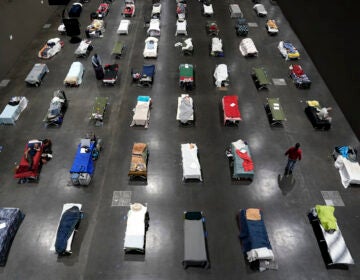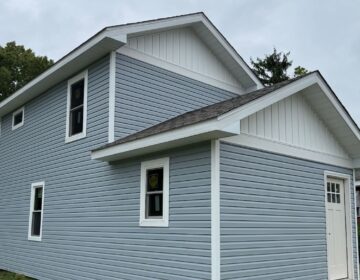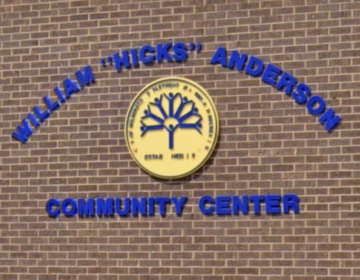Gen Z advocate takes on the housing crisis in Wilmington, igniting a call for affordable housing and solutions for youth homelessness
Delaware officials are making efforts to address youth homelessness. But for many experiencing housing insecurity, the efforts fall short.
Listen 4:11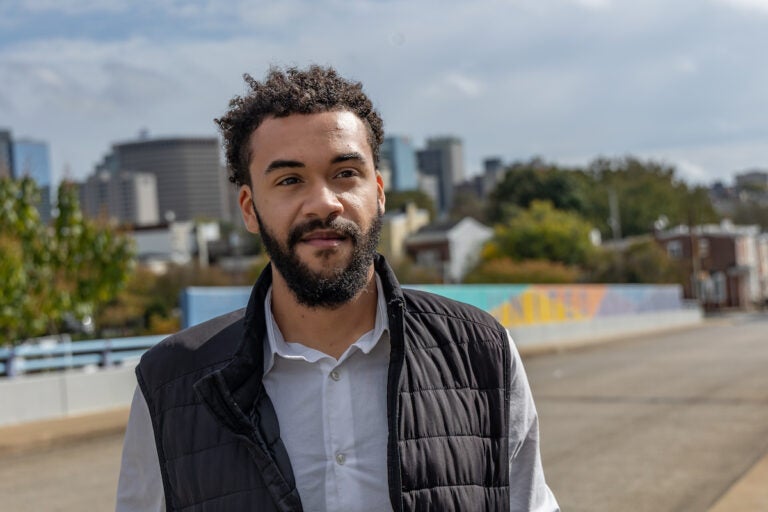
Branden Fletcher Dominguez is an affordable housing advocate in Wilmington, Del. (Kimberly Paynter/WHYY)
This story is from Young, Unhoused and Unseen, a podcast production from WHYY News and Temple University’s Logan Center for Urban Investigative Reporting.
Find it on Apple Podcasts, Spotify, or wherever you get your podcasts.
In the heart of the West Side of Wilmington, Delaware, 23-year-old Branden Fletcher found himself immersed in the harsh reality of housing insecurity. Other young adults in his community have experienced the anxiety it causes. This prompted the Gen Zer to shift his attention toward helping others overcome the critical barriers caused by unaffordable housing and youth homelessness.
Renting became familiar, but it was when his family faced an eviction notice during the pandemic that he had an awakening about the housing crisis.
“I grew up in this community, and I grew up my whole life renting, my parents were renters. I grew up where my parents had to work two or three jobs at a time just to keep the roof over our heads and pay the bills,” he said. “I could remember as early as maybe eight [or] nine years old; my parents having arguments and fights about the rent, getting an eviction notice on the door and wondering if we would have somewhere to stay on the first of the month.”
While aiding his family with their housing situation, representing them, and completing housing assistance applications, he began questioning the resources and support he had heard about.
“Why is it so difficult to get support,” he asked, especially when renters were under a moratorium during the pandemic. “A lot of people across the country were facing job layoffs, and people weren’t able to afford the rent… It just became very difficult when the law, you know, says one thing, but then the reality is the landlords [are] still asking for the rent at the first of the month.”
Fletcher wasted little time before venturing into college and obtaining a public policy degree from Wilmington University. Right away, he started his career and, while managing his independent life, explored the housing issues, influenced by his own housing experiences.
“I’m 23 years old and I can’t afford the rent, the rent is too damn high,” he said. “You have new developments that are being built that are going for $2,000 or $3,000 a month. But if you’re from a low-income background and you’re graduating college, you have no resources.”
Carrie Casey, the general manager of the New Castle County Department of Community Services overseeing the Hope Center, echoes Fletcher’s sentiments. Established as an emergency shelter for the State of Delaware during the pandemic, the Hope Center faces the critical issue of housing affordability, particularly impacting their sheltered families and teenagers.
In Casey’s words, “We’re seeing more people that are experiencing homelessness many for the first time, many for multiple times and it’s largely due to the fact that we do not have a lot of Supply inventory. I think we need about 22,000 units of affordable housing to meet the demand.”
“Contributing to this is the increase of rent. Delaware has increased rents by a large percentage and therefore, some landlords want to see income three times the amount of rent and it just doesn’t meet the kind of jobs and employment opportunities that some of our lower income folks have,” she added. “The Hope Center is temporary, but we tend to have folks stay with us for longer periods of time just because they can’t find housing.”
Fletcher says, “If you do find something that you could afford a lot of times you’re subjugated with living conditions that may be poor.”
He’s been a renter on his own for almost three years and has previously experienced the challenge of juggling two jobs. During this time, he encountered friends who faced eviction, had judgments against them, or struggled to find a place, offering them a place to stay as couch surfers.
“The hidden homelessness is the people who are on the couches, who are surfing from home to home, you know room to room. Just trying to get by,” he said.
Fletcher expressed that his concerns aren’t just his and are impacting his generation.
“For me personally, I see it through the lens of ‘how can we afford to stay in our communities?’ And what could we be doing to better help young people who may be aging out of foster care, who may be coming out of college, but don’t have anything lined up to have housing opportunities?”
‘It feels like you’re hanging on a thread’
The concerns were not unfounded.
In the 2023 Point-In-Time count from the Delaware Continuum of Care, the number of unsheltered individuals has increased by 28% from the previous year. A total of 1,255 people are facing homelessness, sheltered or unsheltered. More than 30% of them are under 24 years old. Five percent are aged 18 to 24, and 25% are under 18.
These statistics even show the shortage of shelters and resources that are unevenly distributed across the state. Most resources are concentrated on the northern side of Delaware, leaving the southern side underserved. According to the PIT, more than 60% of the homeless population is sheltered in New Castle County, while only 15% are sheltered in Sussex County.
“It feels like you’re hanging on a thread,” he said,
“We’re cost burden,” he added. “The rent is a factor, but it’s everything and when your cost burden and you’re spending so much money on just trying to survive it becomes very difficult to keep up.”
He says the housing system was never designed for young people, especially for communities of color.
“Our housing crisis is a racial issue, and Black [people] and Latinos are more likely to be facing eviction than our white counterparts,” he said. “If we just look at the history of the racial inequities that have existed long-standing in our communities with redlining in Wilmington being systematically designed to keep certain communities away from accessing resources and supports that their white counterparts didn’t get, we have to acknowledge it.”
“The housing system is not built to automatically provide young adults housing. It just doesn’t feel like we’ll ever be able to afford to stay in the communities that we have called home,” he added. “Homeownership feels very far out of reach for a lot of us.”
Expressing strong emotions, Fletcher addressed the system and proposed solutions.
He took the WHYY New team to the streets of Westside, where properties are vacant and, according to Fletcher, could be used for housing affordability. From under I-95 to the neighboring streets, the living areas of those who were homeless were visible.
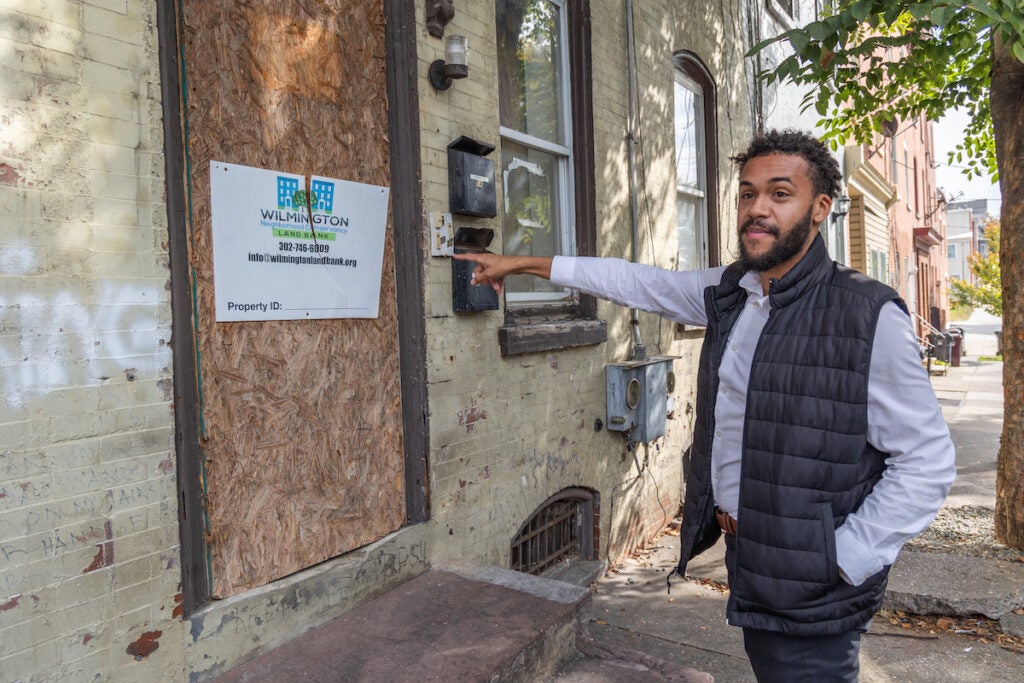
Just a few blocks from Market Street, Fletcher highlighted a construction site, by the Buccini Pollin Group, on North Orange Street, where a $90 million apartment project with 243 units is underway. Notably, none of those units will be affordable.
“They unveiled a $90 million dollar project … they’re [BPG] gonna receive 20% of that $90 million dollars from the public’s money, from taxpayer dollars. So it’s taxpayer money that is subsidizing BPG’s luxury development now,” he said. “Now, listen, I have no problem with development, but I’m saying how about we develop our city [ensuring] that communities that are being displaced because they can’t afford it, have the opportunity to have a small slice for the pie of these units.”

Similar issues are evident at the Cooper and Crosby Hill, which range from $1,600 to $1,800 for a one-bedroom apartment.
“The options that we have and that are being developed in the city of Wilmington are not affordable housing. And what we need to do is require that the developers of these new properties that are getting cash-back on their construction expenses in the Downtown Development District have a reserve of at least 40% of units to be affordable housing,” he said.
These life experiences have led Fletcher to become a housing advocate and run for state Representative for the Third District of Wilmington.
“We need more inclusionary housing, we’re not building enough affordable housing through our zoning,” he said. “So we have to modify state legislation to require a set of, you know, affordable housing set aside.”
Other solutions include reevaluating zoning policies, implementing landlord mitigation programs, expanding shelters such as the Hope Center, enhancing resources for the younger generation through the West End Neighborhood organization’s Lifeline Program, and expanding on the Inclusionary Housing Program.
From an organizational standpoint, Rachel Strucker, serving as the executive director of the Housing Alliance Delaware, emphasizes the presence of a wide-ranging set of solutions, all within the overarching umbrella of a comprehensive strategy to combat homelessness and the affordability crisis.
“There’s a lot that can be done. A lot of it I think kind of fall into two buckets right one is addressing the crisis of homelessness. It’s a humanitarian crisis,” she said. “And making sure that people have the basic safety that they need to maintain the basic human needs [like] shelter, food.”
The big issue lies in the glaring shortage of affordable housing and increasing people’s income to meet today’s market, Strucker said.
“The solutions which really are around creating more decent affordable housing in our state. We’re 20,000 units short of housing that working people, moderate and low-income people, in our state can afford to live in,” she added. “We also need to be doing everything we can to increase people’s income so that the income to housing costs ratios are better.”
To address the housing shortage, Strucker calls for a significant allocation of resources to construct both quality and affordable public housing. She further emphasizes the importance of reevaluating land-use policies to streamline the process of building affordable housing.
“Whether those are local resources, state resources, federal resources,” she said. “It quite frankly takes money to make affordable housing happen. It costs too much to build a unit and then to be able to sell that unit and make a profit. If we leave it up to the private Market is not never going to meet the needs of working people in the community.”
“What we don’t have are land-use policies in place and a lot of our communities that allow for the building of decent, stable, affordable working-people housing in our communities.”
While Delaware is trying to address the issue, it is still insufficient for many people in need.
In the recent session, the Senate approved Senate Bill 87S, fully exempting nonprofit and government-funded affordable housing projects from the state’s realty transfer tax. With Delaware short of 20,000 houses, the bill aims to boost accessible housing for low-and medium-income families.
Delaware has also enacted the right to representation for those facing eviction. This bill ensures that low-income residents dealing with eviction have access to assistance. However, it is still in the implementation stages, as highlighted by Stucker.

Get daily updates from WHYY News!
WHYY is your source for fact-based, in-depth journalism and information. As a nonprofit organization, we rely on financial support from readers like you. Please give today.




